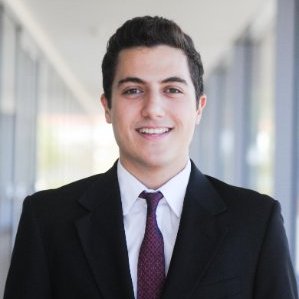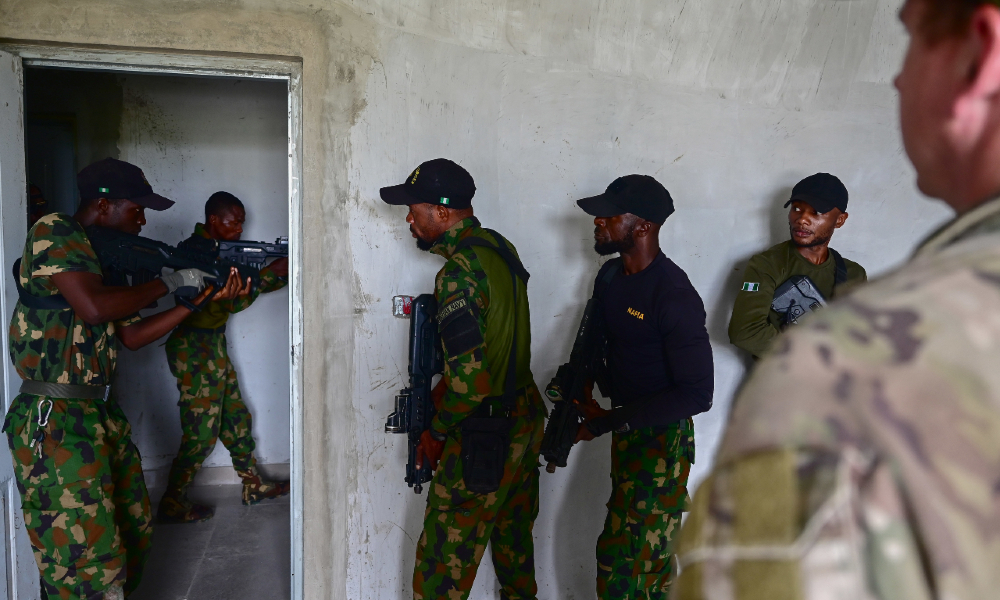Toward Better Refugee Camps
In a recent Brookings Institution report entitled “Cities and refugees: The German experience,” Bruce Katz, Luise Noring, and Nantke Garrelts warn that, in response to the refugee crisis,
Published by The Lawfare Institute
in Cooperation With

In a recent Brookings Institution report entitled “Cities and refugees: The German experience,” Bruce Katz, Luise Noring, and Nantke Garrelts warn that, in response to the refugee crisis,
The failure to include urban leaders as critical participants in European and global deliberations mean[s] that policies will be developed in a vacuum without the benefit of solutions forged on the ground in real time.
This is an important but under-appreciated feature of the current crisis. In offering possible improvements, the Brookings report recommends establishing a “practitioner in residence” program, which would involve collaboration between migration hot-spots in Europe and other places—for example, Houston, Texas after Hurricane Katrina—that have experienced large influxes of new residents in the past.
This proposal underscores the importance of solutions developed by people who have “been there”—a recommendation that we can apply not only in places struggling to incorporate refugees as new long-term residents, but also to areas accommodating refugees on a more temporary basis. To be clear, the focus here is on refugee camps, both formal and informal. “Solutions forged on the ground” and “urban leaders” can mean any number of things, but the salient feature of the recommendation is to encourage outgrowths of civil society within transitory refugee populations. When community leaders get involved, the solutions they offer are often more thorough and specifically tailored to the needs of their fellow refugees.
This past summer, I encountered an example of this insight in practice at the Skaramagas refugee camp in Athens, Greece. There, I met Luaay, who had founded the “Hope School.” A former assistant to the head of a major historical museum in Aleppo, Luaay speaks fluent English and Arabic and reads and writes in seven ancient languages. Like so many refugees, he had built a life in Syria which most people around the world would be proud of, only to see it disappear overnight beneath rockets and rubble. After a tumultuous trip across the Mediterranean, Luaay arrived at Piraeus, the main port in Athens.
Thousands of refugees were left stranded in Greece after the EU-Turkey deal, and as they waited to register and apply for asylum, many set up tents underneath a bridge in Piraeus. Faced with these circumstances, Luaay and two twenty-somethings named Basel and Deyaa started the Hope School, so that the hundreds of children in the port might have some access to education and avoid becoming part of a “lost generation.” Eventually, Luaay and his friends were transferred to the nearby Skaramagas camp, which currently houses over 3,000 refugees, half of whom are children. After setting up an office and formalizing student registration, Luaay began to represent the Hope School in weekly meetings with heads of the various organizations in charge of running the camp. The Hope School volunteers were intensely invested in the project; when Luaay finally got an offer to relocate in France, he even considered refusing out of fear that the school would fall apart in his absence.
Fortunately, the organization is well equipped to handle sudden turnover. Currently, the Hope School is almost entirely staffed by Syrian, Libyan, Afghani, and Iraqi refugees, and it offers a robust set of services that make it one of the most valuable organizations in the entire camp. By partnering with two volunteer teachers—Yannis and Nicos—and a number of outside benefactors, refugee teachers and administrators have created a sustainable education model for Math, Physical Education, Art, English, Arabic, Kurdish and Farsi.
By encouraging community participation and giving refugees the tools to convert their efforts into tangible change, the Hope School put “help me help you” into practice. And as a result, many people’s lives have gotten demonstrably better.
In the brief period I observed, the school designated a space to screen cartoons and educational documentaries and organized music lessons with independent volunteers, among other activities. In one case, a 17-year-old Syrian woman, concerned with the consequences of women passing their days idly, came to the office to explain how much the camp’s women would benefit from more exercise and social interaction. Once the Hope School volunteers found her a room, she spearheaded an effort to set up an evening dance class for women. On another occasion, a young man from Afghanistan named Zamir spent several weeks leading daily rehearsals with children aged 4-16. His project culminated with an hour-long festival celebrating Afghan culture through poetry, theater, and song.
All these activities helped to bridge religious divides, were as inclusive as possible, and were formulated by the very people who benefited from them. Today, the Hope School continues to provide for hundreds of refugees, directing the efforts of incoming volunteers while also restoring a sense of agency to enterprising individuals like Luaay, Zamir, and the Syrian woman who started the dance class. This last point is worth emphasizing: the young men and women working at the Hope School carried themselves differently than many of their peers in the camp. Facing a disheartening situation, to say the least, serving the community appeared to lend these volunteers both purpose and confidence. In short, helping others helped them, too.
Refugee camps need more organizations like this one. In addition to the Greek Navy, Skaramagas was run by the UNHCR, the Spanish Red Cross, Drop in the Ocean, Save the Children, and the Danish Refugee Council. It might appear that these groups are sufficient to serve the needs of the refugee population, but they often were unable to resolve even apparent, addressable problems. By several accounts, weekly meetings between these “key players” regularly resulted in nothing more than plans for more meetings.
For example, the last official camp census was conducted about six months ago, and the “key players” have continued to postpone going door-to-door in spite of the fact that there exists no check-out process for refugees leaving the camp. In turn, families afraid for the future hold onto the keys to their air-conditioned caravans, even when moving into larger apartments provided by the UNHCR or independent volunteers. As a result, two or three hundred refugees sleep in tents inside the camp, while uninhabited caravans are used as storage spaces for families who have since moved elsewhere.
Beyond the particulars, there is a more fundamental disconnect between international aid groups and refugee populations in crisis zones. Refugees often chafe against these organizations because the top-down model evokes a colonialist sentiment: “We are here to help you—make room.” It is important to remember that while refugees are in dire straits, they still value their honor and dignity; anything that could be viewed as patronizing can alienate even the most level-headed refugee.
As well-intentioned as foreign aid groups often are, they remain outsiders, and are unable to create a wholesome, sustainable environment to accommodate families waiting for relocation. Moreover, because each organization plays a specific, limited role, their efforts are focused on leveraging their comparative advantage. In other words, they pay attention to those problems they’re best-suited to solve. This is not to spurn groups like the UNHCR or the Red Cross, without which refugees would certainly be worse-off. However, this amalgamation of specialized foreign aid groups also has serious shortcomings.
Organizations like the Hope School are remarkably well-suited to fill in the gaps, and encouraging viable grassroots organizations should be a priority in any policy initiative. To be sure, the model is no panacea: the teachers and administrators running the school are certainly not able to resolve every malady plaguing Skaramagas. But by engaging and empowering community leaders, the Hope School has been able to move across ideological and ethnic barriers to better address the challenges facing the refugee population, and they do so on a consistent basis.
Reporting has indicated that in camps across Europe, education is lagging, migration funding is spread thin, and refugees are miserable while awaiting relocation. Of course, each camp has different problems stemming from different causes. However, this is precisely why it is necessary to engage the refugees; community leaders are uniquely positioned to help drive fuller, more nuanced solutions. In deliberations about how best to provide for refugees in camps across the world, there is no excuse for leaving the refugees themselves out of the conversation.





